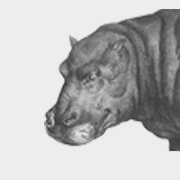4 Things Web Designers Can Learn From Food Trucks
Design principles are everywhere. Even in places you might not notice or expect.
Take food trucks for example: not only are they mobile hunger-fighting supertrucks (like Transformers, only more delicious), but they’re prime examples of some really important design principles.
Here’s a quick look at what web designers can learn from food trucks.
First, they’re user responsive. Lunch rush outside an office park? You bet food trucks will be there. Outdoor concert? Yep, there, too. Successful food trucks study where their consumers will be. They make it easy for the consumer to get what they want when they want it — and your website should, too.
Designing your website around your consumer will make it much more successful. Know your target. Know their browsing habits, timeframes and what they want from you. The faster and easier it is for visitors to get what the want, the better.
Second, food trucks are great at utilizing space. With minimal square footage, it’s important to take advantage of every inch of room. Some might think this means cramming every kitchen gadget imaginable into every nook and cranny or buying gnome-sized utensils to minimize the storage space needed, but that’s not the case. Truly good design melds purpose with efficiency. You need to find tools that can do more than one thing, make sure your layout is logical and easy to follow and never make a purchase or change without intent. The same goes for your website.
Make sure every aspect of your website has purpose and gets your visitors where they need to be. The layout should be logical and easy to follow, just like a food truck. The color palette, fonts, images, everything on your site should be there for a reason. Whether it’s to emphasize a brand’s voice, draw visitor attention or make the website more user-friendly, every part of the website should be created with a specific objective in mind. Your objective might not be as tasty as a food truck’s, but it’s just as important.
Then comes the analytical stuff: Test, test and test some more. This might not seem like a design principle, but analytics can make a huge difference in any business. Take Clover Food Lab for example. Founder Ayr Muir, an MIT graduate, has made constant analysis a priority and reaped the rewards. He can tell you how close his customers are to his trucks, what percentage of customers will come back and when and more — all because he does constant analysis to conquer the marketplace and create satisfied customers. You can do the same with your website.
There are tons of free analytics tools to help you measure the success of your website. Google Analytics, arguably the most popular, even offers free training on becoming an analytics expert.
If you’re not sure where to go from there, drop us a line. We’ll help you get your website up and running like a well-oiled food truck. In the meantime, check out some food trucks around Des Moines.
Photos courtesy Eden, Janine, and Jim and weeklydig via Flickr Creative Commons



